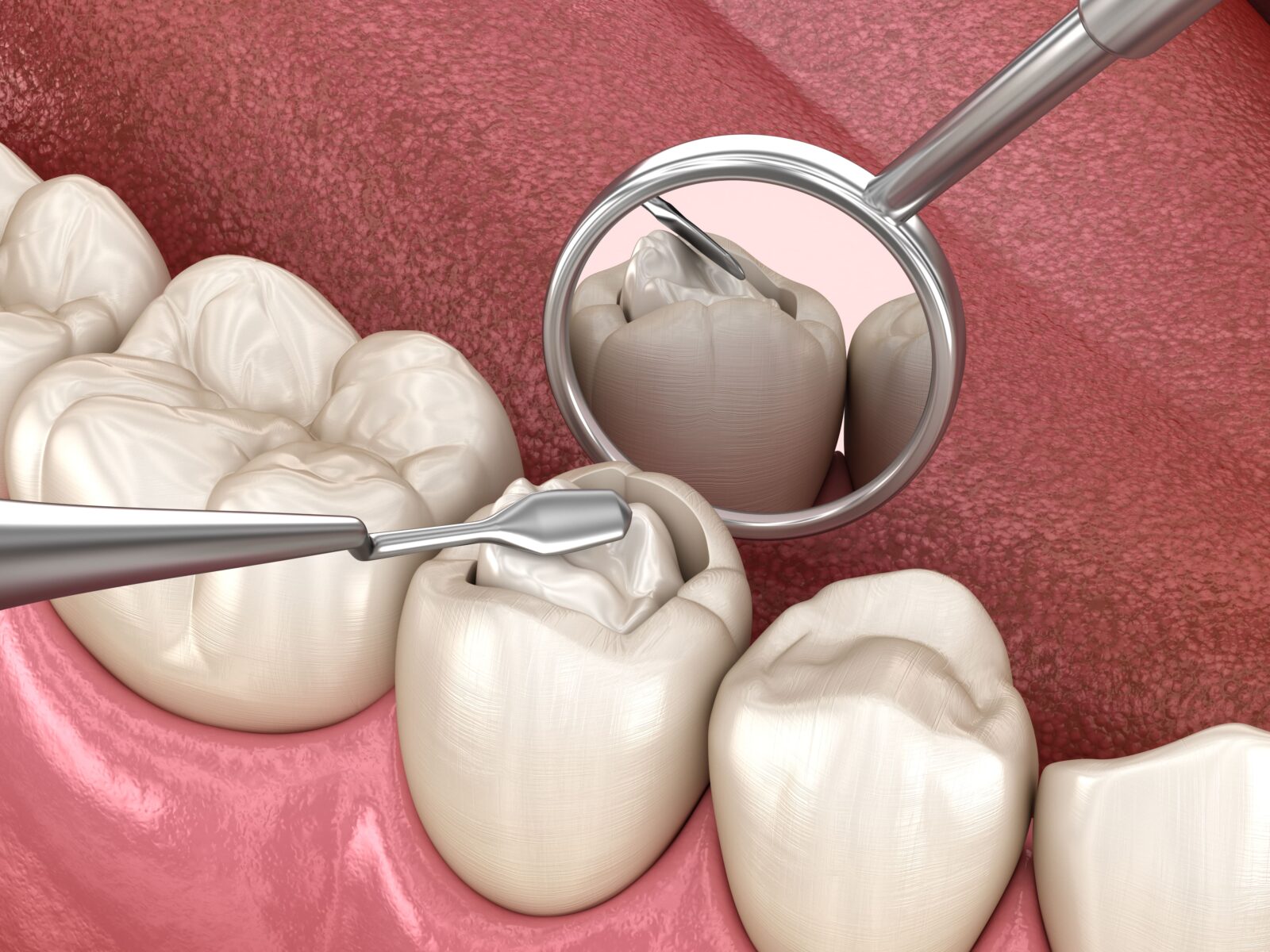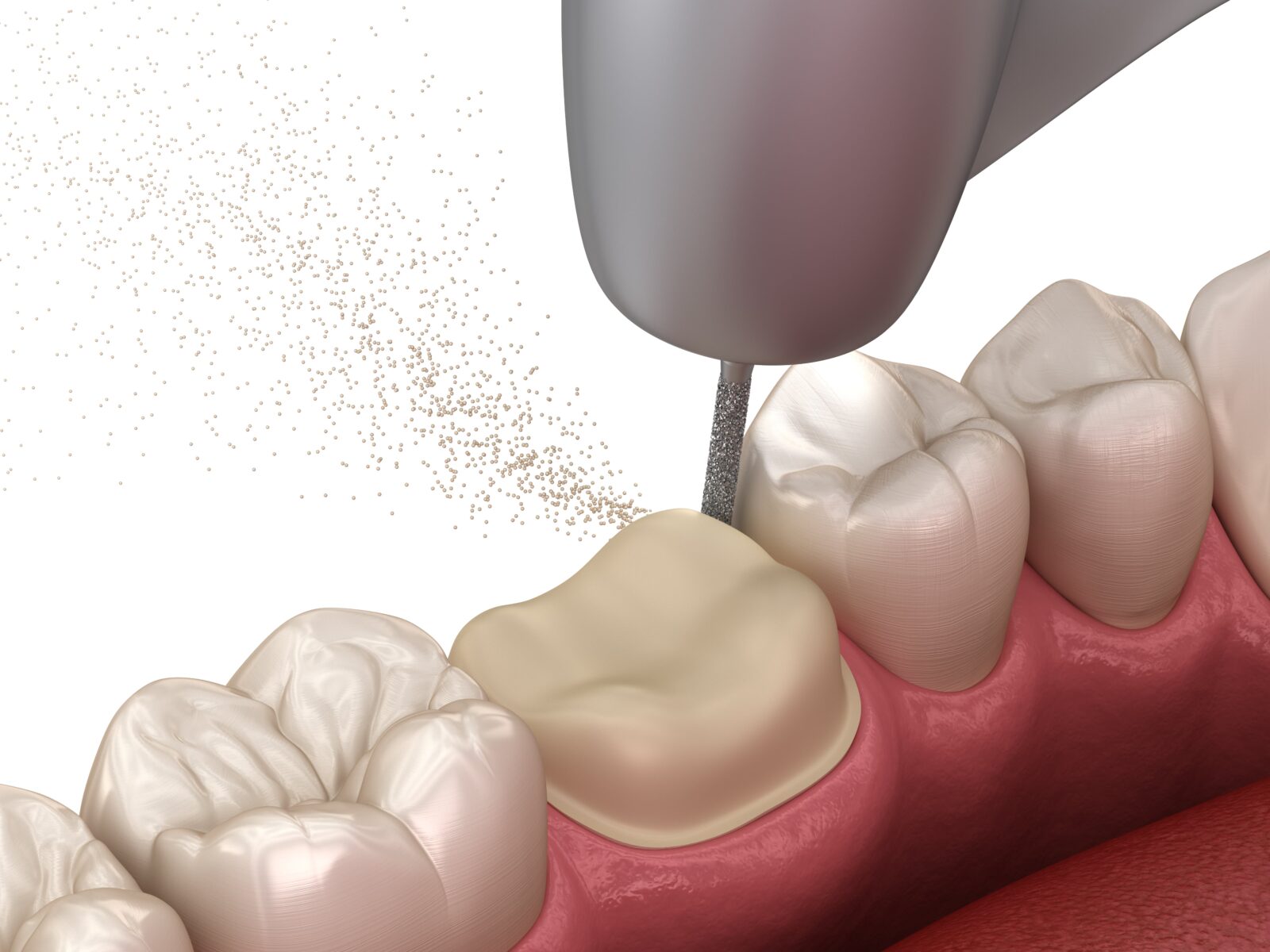When faced with dental issues, understanding the best treatment option can be a daunting task. Two of the most common restorative procedures are dental crowns and dental fillings. But how do you decide which one is right for you? Let’s dive into the differences, benefits, and ideal scenarios for each to help you make an informed decision.
Understanding Dental Fillings
Dental fillings are restorative materials used to repair teeth that have been compromised due to decay or minor trauma. They work by “filling” the void or cavity in the tooth, restoring its original shape and function, and preventing further decay or damage.
Dentists place fillings by first removing the decayed or damaged portion of the tooth. After cleaning the affected area, the cavity is filled with a suitable material, such as amalgam or composite resin. The filling material is then shaped to match the tooth’s natural contour, ensuring a comfortable bite and seamless appearance.
Dental fillings are generally recommended in the following situations:
Cavities:
The most common reason for a dental filling is to treat a cavity, which is a hole in the tooth caused by tooth decay. When bacteria in the mouth break down sugar and starch residues from food, they produce acids that can erode the tooth’s enamel. Over time, this erosion can lead to cavities. A filling helps seal off the space, preventing bacteria from entering and causing further decay.
Minor Tooth Fractures or Chips:

If a tooth has a small chip or crack, a filling can be used to restore its shape and prevent further breakage.
Worn Teeth:
Teeth grinding or clenching, also known as bruxism, can lead to the wearing down of the tooth’s surface. In such cases, fillings can be used to restore the tooth’s original shape and protect it from further wear.
Replacing Old or Damaged Fillings:
Over time, fillings can wear down, break, or fall out. In such cases, the old filling material is removed, and the cavity is cleaned and filled again.
After Tooth Decay Removal:
If a dentist identifies decay during a routine check-up or through X-rays, they will remove the decayed portion of the tooth and use a filling to restore the tooth.
The type of filling material used—such as amalgam, composite resin, gold, or porcelain—depends on the location of the tooth, the extent of the repair, the patient’s preference, and budget considerations.
Benefits of Dental Fillings:
- Less invasive, preserving more of the natural tooth.
- Typically more cost-effective than crowns.
- Suitable for smaller cavities or damage.
- Can be matched to the natural tooth color, especially with composite resin fillings.
Delving into Dental Crowns
Dental crowns, often referred to as “caps,” are custom-made restorations that cover the entire visible portion of a tooth, from the gum line upward. They are designed to encase a damaged tooth, providing strength, restoring its original shape and size, and improving its appearance.
The process of placing a crown involves preparing the affected tooth by reshaping it to fit the crown. After preparation, an impression or digital scan of the tooth is taken to create a precise model for the crown. While waiting for the permanent crown to be fabricated, a temporary one may be placed. Once the custom crown is ready, it’s checked for fit and bite, adjusted if necessary, and then cemented onto the prepared tooth.
Dental crowns are generally recommended in the following situations:
Significant Tooth Decay:
When a tooth has extensive decay that is too large for a filling to adequately restore, a crown may be advised to provide strength and prevent further damage.
Tooth Fractures:

For teeth that are cracked, broken, or fractured, crowns serve to hold the tooth together and prevent further breakage.
After Root Canal Treatment:
After a root canal procedure, the treated tooth can become brittle and more prone to breakage. A crown is often placed to protect and strengthen the tooth.
Worn Down Teeth:
Teeth that are severely worn down, either due to bruxism (teeth grinding) or other factors, can be restored using crowns.
Cosmetic Enhancement:
Crowns can be used to improve the appearance of misshapen, discolored, or aesthetically unpleasing teeth.
Large Fillings:
If a tooth has a large filling and there isn’t much of the original tooth structure left, a crown might be recommended to protect and support the tooth.
Dental Bridges:
Crowns are used as anchors on either side of a dental bridge, which is a restoration used to replace one or more missing teeth.
Dental Implants:
After a dental implant is placed in the jawbone, a crown is attached to it, serving as a replacement tooth.
The material chosen for the crown—such as porcelain, porcelain-fused-to-metal, ceramic, gold, or other metal alloys—depends on the tooth’s location, the patient’s preference, aesthetic considerations, and budget. The primary goal of a dental crown is to restore the tooth’s functionality while maintaining a natural appearance.
Benefits of Dental Crowns:
- Provides strength to a compromised tooth, making it durable.
- Ideal for teeth that have undergone root canal treatment, as they can become brittle.
- Can enhance the appearance of discolored or misshapen teeth.
- Offers comprehensive coverage, protecting the tooth from further damage.
Making Your Decision: Crowns or Fillings?
Assess the Damage:
The extent of tooth damage is the primary determinant. Minor cavities can be addressed with fillings, while significant damage might necessitate a crown. Additionally, if a large portion of the tooth is missing or if there’s a risk that the tooth might fracture further, a crown can offer better protection. A tooth with a large filling might be more vulnerable to breaking, making a crown a more suitable option.
Consider Longevity:
While both fillings and crowns are durable, crowns generally offer a longer lifespan, especially for extensively damaged teeth. Dental crowns also last longer in cases where the affected tooth is in the back of the mouth.
Budgetary Concerns:
Dental fillings are typically less expensive than crowns. However, it’s essential to consider not just the immediate cost but also the long-term benefits and potential future treatments. A crown might be more costly upfront but could prevent further treatments or complications in the long run.
Consult with Your Dentist:
The best way to determine whether a filling or crown is the right option for you is to consult with your dentist. They will conduct a thorough examination, consider the tooth’s health, location, and function, and provide expert advice on the most suitable treatment option.
In Conclusion
Both dental fillings and crowns play pivotal roles in restoring and maintaining oral health. Your unique dental needs, the extent of damage, and your budget are all factors that will influence your decision. By understanding the differences and consulting with your dental professional, you can ensure that you choose the treatment that will keep your smile bright and healthy for years to come.




